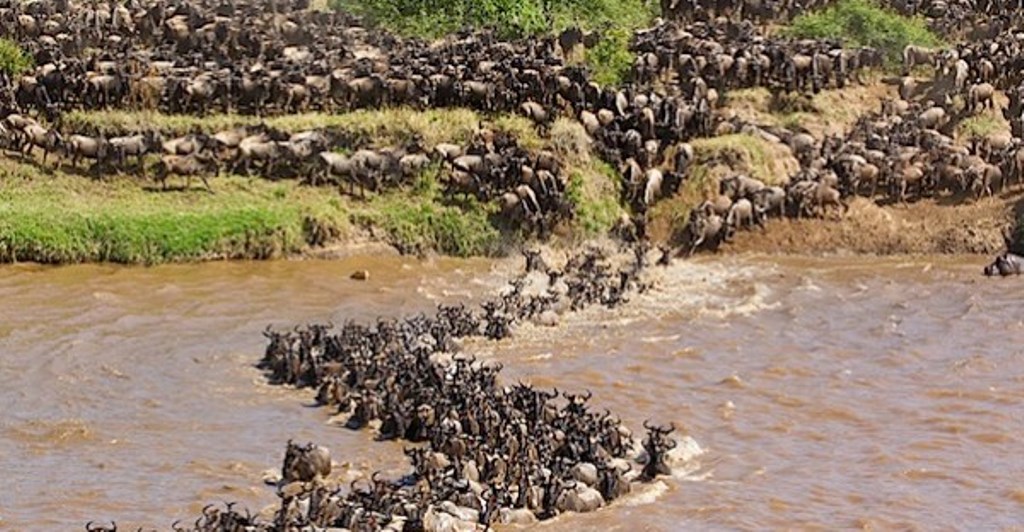Author: EDWARD QORRO
AfricaPress-Tanzania: THE Great Wildebeest Migration, the world’s largest animal migration, could disappear if human related activities along wildlife corridors aren’t controlled, a conservator has warned.
Fielding questions from reporters here on Thursday, a senior assistant conservation commissioner attached to the Serengeti National Park (SENAPA), Massana Mwishawa, raised a flag on a ‘possible disappearance’ of the annual spectacle should such activities continue to go unchecked.
Mr Mwishawa, who was weighing in on a recent video clip showing unidentified men on the Kenyan side chasing a herd of Gnus that crossed Mara River from Tanzania, noted that such campsites were proving to be an obstacle to the scene which captures the attention of millions of viewers around the world.
“For instance, the wildebeest can no longer go to Lake Natron due to human related activities which stand on the animals’ paths,” he said.
Mr Mwishawa was of the opinion that the wildebeests could remain in Tanzania should more campsites be built on the Kenyan side.
The conservator further revealed that the portion of the eastern route which passes through the Loliondo Game Controlled Areas had been ‘partly blocked’ due to the increase of human population and livestock in the area.
“The area in question used to be a migratory corridor for the wildebeests heading to Lake Natron, but they are now compelled to use other routes such as the Lobo, and Kuka paths,” he said.
According to ecologists, the wildebeests in their millions, clock about 800 kilomteres in the annual spectacle in pursuit of water and grass which is rich in nutrients for their survival and that of their unborn calves.
He further revealed that Serengeti National Park once had campsites built along wildlife corridors in Kogatende area, but had to be demolished after seeing the danger it posed to the Great Migration.
“As a country, we foresaw the problem and decided to do away with them; it is high time Kenya did the same,” he counseled.
The SENAPA Senior Assistant Conservation Commissioner disclosed that plans were underway to relocate people living in the Speke Gulf, which serves as an important route for the Gnus trekking to Lake Victoria in pursuit of water to quench their thirst.
It is estimated that about 8,000 people reside within the Speke Game Controlled Area in Bunda District.
Meanwhile, wildebeests that cross to the neighbouring country spend less time there because of limited food and unfriendly habitat in Kenya, characterized by mushrooming of human residences and hotel facilities.
“This is a blessing to us because we value wildlife,” said Mr Mwishawa.
According to the ecologist, out of the 14,763 square kilometres of Tanzania’s most popular tourist destination, less than 30 per cent has been utilized for tourism related activities per General Management Plan (GMP) of the area.
Kenya’s Tourism Cabinet Secretary Najib Balala has demanded the closure of the hotel for blocking the wildebeest migratory corridor at Mara since the video clip went viral early this week.






